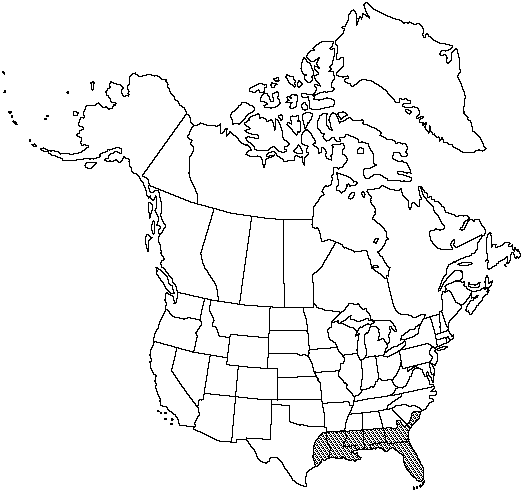Thelypteris kunthii
Contr. U.S. Natl. Herb. 38: 53. 1967.
Stems short to long-creeping, 4–8 mm diam. Leaves monomorphic, evergreen, up to 2 (–3) cm apart, (15–) 50–160 cm. Petiole straw-colored, (5–) 20–80 × (1–) 3–6 mm, at base with brown, linear-lanceolate, hairy scales. Blade (9–) 30–80 cm, broadest at base, gradually tapered to pinnatifid apex. Pinnae (2–) 8–15 (–20) × (0.6–) 1–2.5 cm, incised 3/5–4/5 of width; segments oblong, rounded to acute at apex; proximal pair of veins from adjacent segments running to sinus, or nearly so. Indument abaxially of hairs mostly 0.3–1 mm on costae, veins, and blade tissue; veins adaxially with similar hairs but blade tissue usually without hairs, often with scattered yellowish, stalked glands 0.1 mm. Sori round, medial to supramedial; indusia tan, hairy, hairs 0.2–0.4 mm; sporangial glands obscure, yellowish, stalked, arising from sporangial stalks. 2n = 144.
Habitat: Roadsides, ditches, riverbanks, woodlands, limestone sinks
Elevation: 0–100 m
Distribution

Ala., Ark., Fla., Ga., La., Miss., S.C., Tex., e, s Mexico, West Indies, Bermuda, Central America to Costa Rica, South America from Colombia to n Brazil
Discussion
Thelypteris kunthii occasionally hybridizes with T. augescens and T. ovata in Florida; hybrids with T. hispidula may also occur.
Selected References
None.
Lower Taxa
"broadest" is not a number."/5" is not declared as a valid unit of measurement for this property.